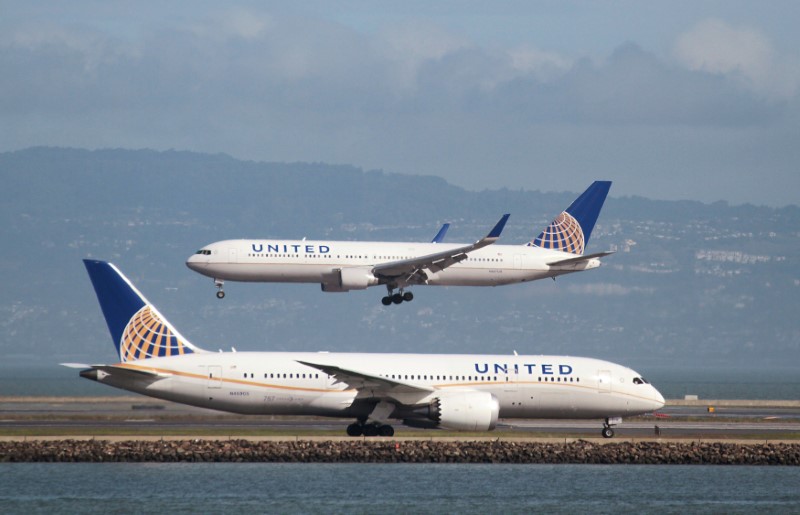Investing.com — United Airlines Holdings (NASDAQ:) shares fell more than 1% in premarket trading Thursday after reporting weaker-than-expected second-quarter revenue and guidance for the current quarter that fell short of Wall Street estimates amid slowing air travel demand.
The carrier reported adjusted earnings per share of $4.14 on revenue of $14.99 billion. Analysts polled by Investing.com anticipated an EPS of $3.98 a share on revenue of $15.11 billion.
Second quarter cost per available seat mile, or CASM was down 4.8% compared with CASM in Q2 2023.
Looking ahead, the airline forecast Q3 adjusted EPS of $2.75 to $3.25, below estimates for $3.59.
The weaker guidance comes at a difficult time for the airline industry, as a variety of U.S. airlines recently flagged this summer and mid-August as an inflection point, United Airlines said, with “published schedule changes showing an approximately 3 point decline in industry capacity growth rate.”
As the inflection point draws closer, multiple airlines are cutting loss-making capacity, United Airlines said, touting improved performance in the second half of Q3.
“Looking forward, we see multiple airlines have begun to cancel loss-making capacity, and we expect leading unit revenue performance among our largest peers in the second half of the third quarter,” it added.
For the full-year, the airline continues to expect adjusted EPS in a range of $9.00 to $11.00.
Commenting on the report, Citi analysts said UAL’s results were “solid, with strong unit cost management and lower fuel offsetting slightly lower-than-expected unit revenue.”
“Although the 3Q guidance range was below consensus, the market appeared to have already priced in these expectations, since rival Delta Air Lines (NYSE:) had made very similar comments during their earnings release last week.”
Citi added the stock appears “attractive” at this valuation.
Analysts at Morgan Stanley voiced similar thoughts, saying they would buy “any weakness in airline stocks in the coming days” after UAL’s Q2 beat. This, and more importantly the management’s commentary calling for industry capacity inflection “should set up the stock (and the space) nicely for 2H24 into 2025,” they added.
“We believe the commentary is more forward looking and relevant than UAL’s disappointing 3Q guide, which reflects the July/1HAugust drag.”
(Yasin Ebrahim contributed to this report)
Read the full article here


